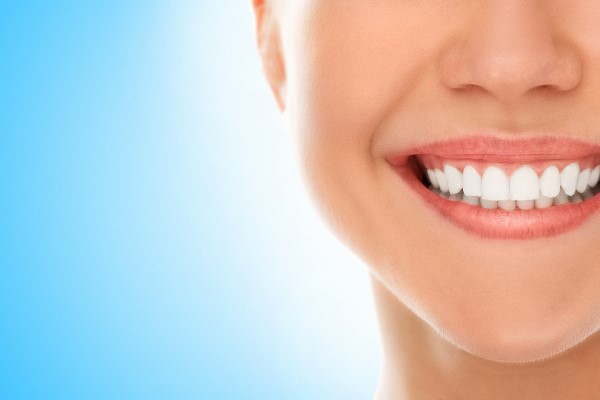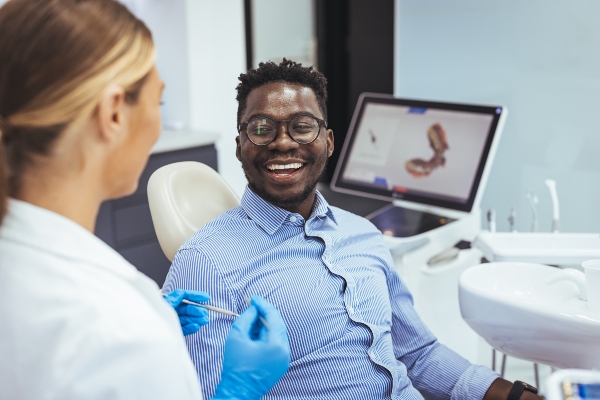How Are Veneers Placed?

Dental veneers are a popular treatment option used for both restorative and cosmetic purposes. They are versatile in the sense that they can be used to cover stained teeth, repair chipped teeth and even lengthen teeth that are too short. While veneers are a popular choice for many patients, they are newer to dentistry compared to other procedures. With that being said, it can be helpful to know exactly how they are placed.
The dental veneers placement process
Below is an overview of the dental veneers placement process. These steps can be helpful to review prior to getting to veneers.
Molds and impressions
The first step of the veneers placement process is for the general dentist to take molds and impressions. Typically, veneers are used to cover teeth that are in the front of the mouth. Because they are used to cover an existing tooth, an impression is required so that the dental lab can custom-create a perfect veneer.
Impressions are done in the general dentist's office, and the appointment itself does not last longer than an hour. The impressions are then sent off to a dental lab where the veneers can be custom-created. Additionally, the dental lab will be able to color-match the veneer to the surrounding natural teeth so that the restoration does not look different.
Bonding and placement
After a week or two, the patient can return to the dentist's office to have the veneers placed. A numbing agent will be administered so that sensation is kept at a minimum. To begin placement, the dentist will etch the surface of the tooth a little bit so that a dental bonding material can be applied. Etching can cause slight sensitivity, but there will not be any pain. After etching, a dental resin material is painted onto the tooth, which resin sticks to the enamel and the veneer. Lastly, the dentist will place the veneers over the teeth that are being worked on.
Shaping and finishing
To ensure that the veneers bond to the resin material and the natural tooth, the general dentist will gently secure them by using a dental tool. The edges will be secured on all sides so that there are not any imperfections, which could cause irritation to the gumline or surrounding teeth. Additionally, the dentist will ask that the patient feel around to make sure nothing is poking or prodding them. If there are any imperfections, the dentist will use a different tool to remove excess areas.
Lastly, the patient will return home and wait a day or two to return to normal habits, such as eating. For the most part, there are not any required care tips, other than to practice good oral hygiene and to avoid physical force to the mouth.
Learn more today!
Want to find out more about veneers? These are a great option for restoring teeth that are in bad shape. Working with a general dentist is a great place to start, as they can perform an evaluation to get the veneers process started. Reach out today to get started or to learn more.
Request an appointment here: https://www.carolinasmilesdentist.com or call Carolina Smiles Family Dental at (828) 974-3326 for an appointment in our Brevard office.
Check out what others are saying about our services on Yelp: Read our Yelp reviews.
Recent Posts
A smile makeover can be achieved with the help of one procedure or several. What a dentist recommends depends on the attributes of your smile you would like to change. To give you a better picture of some treatments that can transform a smile, take a look at these five popular treatments.Slight to moderate misalignments…
Having a healthy and attractive smile not only transforms your appearance but also boosts your confidence. A smile makeover combines cosmetic dental procedures that are tailored to your unique needs and treatment goals. If you have been wondering if you have been contemplating whether a smile makeover is right for you, here are five reasons…
Dental implants feel and function just like natural teeth, and they can last a lifetime. An implant is a rod or screw that is placed in the jawbone. It is usually made out of titanium, but it can also be made out of zirconium.Dental implants replace missing teeth roots, and restorations like crowns are placed…
Getting a smile makeover means getting at least one type of cosmetic dental treatment. You may want to improve your smile, but along with these treatments is the benefit of better oral health. Finding out more about this makeover can help you make informed decisions. Here are the details to consider about a smile makeover.The…


